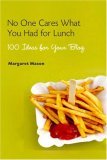 [Sautéed Tuna Steaks with Daikon Salad]
[Sautéed Tuna Steaks with Daikon Salad]The neat thing about Spain, even to the envy of its French neighbors, is that Christmas holidays span an entire three-week. At the end of the first week of January, I was still savoring the last bit of my get-away in Provence. The first host that I’ll dedicate this post to is Zol, a guy known for both his musical and culinary talents.
For lunch that day, in his apartment in a town right outside of Marseille,
Zol, Le Cordon Bleu, whipped up a simple lunch with incredibly healthful proportions and surprisingly matches the four criteria I look up to in a good meal: taste, texture, nutrition and presentation. The entrée was
sautéed tuna matched with a light and tasty daikon salad. Next up, the
plat principal was
seared scallops served with a pasta made with spinach.
I love how he served the tuna by dividing the steak into four elongated pieces elegantly presented in a rectangular Japanese-inspired plate. It went really well with the
Daikon salad that was simply grated and seasoned with a dash of Chinese dark vinegar (made from fermented glutinous rice) and some light soy sauce. Zol added that this Chinese dark vinegar has a very similar taste to balsamic vinegar, which lends a zesty touch that plays well with the lightly sweetened flavor of the grated daikon.
We finished the meal with a
plateau de fromage and dessert. A neighbor upstairs had presented him with a decorated cellophane bag filled with home-baked goodies. HE made them all from scratch! We happily walloped them down as we chatted over a cup of green tea.
Here are the imagined and improvised recipes of the dishes described above:
Sautéed Tuna Steaks with Daikon Salad2 tuna steaks
1 teaspoon grated ginger, minced
1 tablespoon olive oil
1 tablespoon soy sauce
a dash of white or black pepper
1 small daikon radish, peeled and grated
Chinese dark vinegar
Combine ginger, pepper, and soy sauce in a small bowl. Marinate fish with mixture for 5 minutes.
In a heavy-bottomed nonstick skillet, heat olive oil over medium-high heat. Add the fish and cook for 1.5 minutes on each side. Fish should not be completely opaque.
Serve with a Daikon Salad. Simply grate Daikon radish and place in individual mounds. Season each mound with a dash of Chinese dark vinegar (or balsamic vinegar) and some light soy sauce.
Seared Scallops with Pasta

Recipe for 2:
12 scallops
1 teaspoon soy sauce
1 teaspoon curry powder
Juice of half a lemon
1 tablepoon Extra Virgin Olive Oil
Salt and pepper
Italian Pasta (Spaghetti or Penne Rigate)
Bring a pot of water to boil. Meanwhile, season scallops with soy sauce, curry powder and 1 tablespoon lemon juice, and a dash of salt and pepper. Set aside.
When water is boiling, add a pinch of salt. Once water gets to boiling point again, add pasta. Follow instructions on the package. Real Italian semolina pasta usually takes about 12 minutes to cook.
Heat pan over medium heat for about 2 minutes. Add a little olive oil and wait till it heats up a little. Gently place scallops on pan and space them out a little. Do not move them as it might ruin the searing process. Cook each side for 2 to 3 minutes, until scallops are browned. Turn them over, and repeat the process.
When scallops are cooked and opaque, deglaze the pan by adding the rest of the lemon juice over the scallops. Toss scallops and accumulated pan juices with freshly cooked pasta. Add more salt and pepper to taste. Serve immediately.
Etiquetas: France, Principal, Salad
 [Olive bread]
[Olive bread]




























